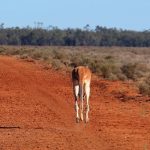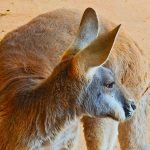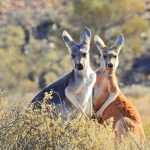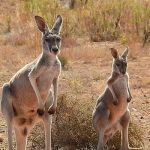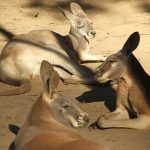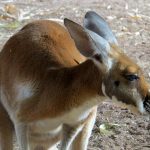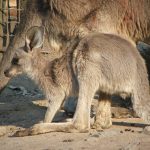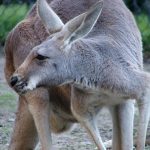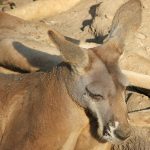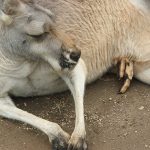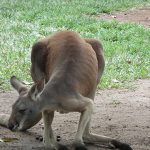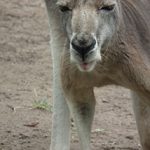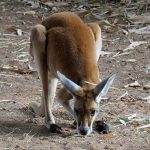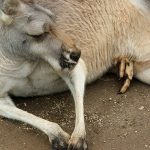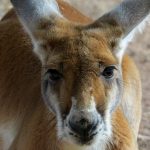RED KANGAROO
The Remarkable Red Kangaroo: Australia’s Iconic Hopper
Australia’s red kangaroo is more than just a national symbol. It is an extraordinary creature perfectly engineered for survival in one of the world’s most demanding environments.
Key Facts and Fascinating Insights
Physical Features
- Giant Among Marsupials:
The red kangaroo is the largest marsupial on Earth. Males can stand taller than most people—reaching heights of 2 metres and weighing up to 90 kilograms. - Distinctive Red Fur:
Their name comes from their thick, reddish-brown fur, which shimmers in the outback sunlight. Females often appear bluish-grey.
Adaptations for Survival
- Warm-Weather Warriors:
Adapted for survival in arid and semi-arid regions, red kangaroos thrive where water and shade are scarce. Their bodies are built to withstand heat and conserve moisture. - Efficient Movers:
Their massive hind legs and long tails give them both balance and the power for enormous leaps—sometimes clearing distances of more than 9 metres in a single bound. At top speed, they can travel up to 64 kilometres per hour.- Fun Fact: Kangaroos are unable to walk backwards.
- Water Wisdom:
They can go for extended periods without drinking, extracting most of their water needs from moisture-rich plants they eat.
Social Life and Communication
- Community Creatures:
Kangaroos live in social groups called mobs, where a dominant male (called a boomer) leads and defends his group, especially during the breeding season. - Expressive Behaviours:
They communicate through vocalisations, such as grunts and clicks, and striking visual cues—like thumping their large feet on the ground as a warning or to show their presence. - Body Language:
Boomers show dominance by standing tall, flexing their forearms, and even boxing each other—spectacular contests that echo through the dusty plains.
Remarkable Reproduction
- Female Flyers:
Female red kangaroos, known as flyers, possess a unique reproductive ability called embryonic diapause. This allows them to pause the development of a fertilised egg, waiting for the best possible moment to complete gestation—an extraordinary adaptation for unpredictable environments. - Joey’s Early Journey:
Joeys are born tiny and underdeveloped, crawling into their mother’s pouch to complete their growth, safe from the harsh climate.
Ecological Importance
- Nature’s Gardeners:
By grazing on a variety of grasses and spreading native plant seeds, red kangaroos help shape Australia’s landscapes and support plant diversity. - Indicator Species:
Their health and numbers provide valuable insight into the well-being of Australia’s delicate arid ecosystems.
Multi-Sensory Encounter: The Outback Alive
Picture a golden dawn on Australia’s sweeping plains. The crisp, dry air prickles on your skin as the scent of eucalyptus drifts on the breeze. From the grass, a mob of red kangaroos emerges—their powerful legs sending gentle vibrations through the earth with each bound. Sun glints off their red coats, and as you listen, you hear the soft thud of feet and the distant grunt of a boomer calling across the silence.
Why Their Story Matters
Red kangaroos stand as a symbol of resilience and adaptation. Protecting their habitats safeguards not only a unique species but the balance of an entire ecosystem. By learning about these marvellous animals, we all play a part in supporting the continued diversity of Australia’s wild spaces.
| Feature | Description |
|---|---|
| Scientific Name | Macropus rufus |
| Height | Up to 2 metres (6.6 feet) |
| Weight | Up to 90 kg (200 lbs) |
| Lifespan | 8–14 years in the wild |
| Main Diet | Grasses and shrubs |
| Social Structure | Mobs led by a dominant male (boomer) |
| Conservation Status | Least Concern (but sensitive to ecosystem changes) |
Let the story of the red kangaroo remind us of the wonders hidden in Australia’s wild heart, and the importance of protecting these treasures for generations to come.

